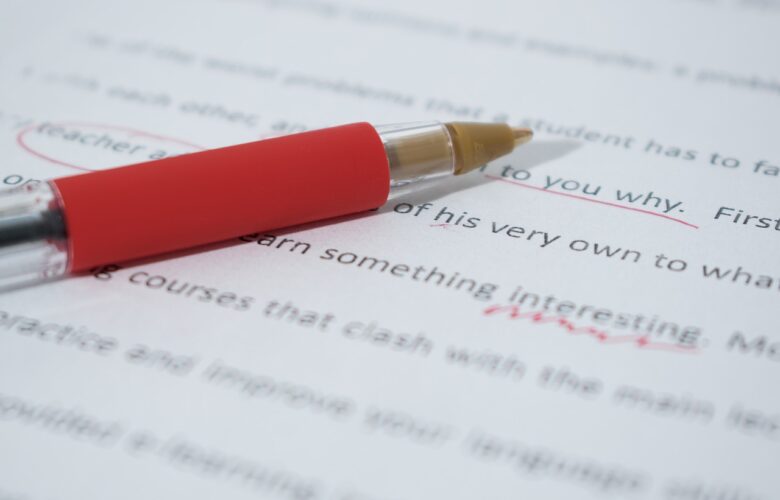Why should you proofread your thesis: 8 Best Tips to Follow
Having the perfect thesis means that it has to be free from errors, and the data has to be correct. However, this can only be avoided with successful proofreading of the thesis. In this post are the relevance of proofreading and the tips that should help in the process.
The relevance of proofreading a thesis
Writing a thesis is majorly for postgraduate students, and it involves a long scientific and academic document. The documents tend to be complicated and then have uncommon data that are to be presented appropriately.
The references must be correct, consistent, and thorough enough to pass professional standards. So, proofreading comes in handy as it aims to correct mistakes before it is passed on to the right channels.
Proofreading is relevant in not just thesis but also other writing types, and you should attend to it with as much time as possible.

Tips on Proofreading a Thesis
Once you’re confident that the thesis in front of you is set to be proofread, there are things that you should watch out for. These tips are to guide you through the process of proofreading. Check them out below:
#1: Consider how it is formatted
How the thesis is formatted is equally as important as the content itself. Scan through the whole document and check for the place where the paragraphs may need modifications. Also, confirm that you use the right headings and subheadings at the appropriate time. Look at the fonts as well as your sources and make sure they are well labeled.
#2: Look out for consistency
Ensure that your content follows the same style throughout the whole document. This concerns both the tone of the voice and the language of the thesis. If the dissertation has started a few months back, there is always a propensity that some irregularities may come up. So, check out for all of these that may have come on along the way. Make sure that you used the right sources, capital letters at the right places, hyphenation, and all are similar all through the content.
#3: Adopt useful tools and guides
Some different websites and blogs offer help when proofreading as an essential guide for the main focus when proofreading. They suggest several common mistakes that people may make while working on a thesis.
However, research online and find some reputable platforms that edit documents. Something like Grammarly goes through a document and guides you through the errors on the document. This may cover most of the mistakes, but you still need to go through the edit yourself.
#4: Take the process in bits
Reading through the thesis as a whole could get boring and cause you to lose focus along the way likely. This may then result in small mistakes during the process. However, try cutting through the dissertation and then begin working it through.
Cutting the thing into bits could take several days to do, but that is why it is advisable that you set out up to a week. With this, you are sure of more focus, and it allows you to take more frequent breaks than usual.
#5: Try word functions

Microsoft Word has served as a means through which this type of content has been created. Aside from helping you organize your work, it can serve as a means to proofread your content. Once the language is set to whatever region the writing is based, it easily tracks down your mistakes. You could also use the search button to find similar errors to the ones you already noticed.
#6: Read it out.
It would make it easier to notice areas where the sentences fail by merely reading out the whole piece. From there, you can then change the content to something more applicable. This is a simple way of correcting significant mistakes that may be in your work structure and minor grammar mistakes and spellings.
#7: Get a print out for corrections
This involves the old-fashioned way of proofreading documents where you would need to print out a thesis copy. From the printout, you would go through the whole thing and mark out all the mistakes. After doing this, you can now make your actual corrections on the main documents.
The reason for this method is because it is easier to notice errors on paper than from the screen of a computer.
#8: Scan for plagiarism
Plagiarized content cannot pass as an original and, for this reason, make it a duty to scan just after proofreading. You may be penalized for plagiarism if caught, as it is regarded as an unethical practice. Find an online plagiarism check and browse through your documents.
How To Get Ready for Proofreading?
Since you now know the importance and tips of proofreading, it is time to get into a process that prepares you for proofreading. In this section are things that should be done.
Set out time:
The first mistake that could be made when creating a thesis is not allocating time to the process of proofreading. Instead of procrastinating and waiting out till the night before your deadline, this set time takes out the urgency’s pressure. It is advisable that you set out at least a week to proofread the thesis material.
Identify the weak area:
Scan through the whole document and check for obvious mistakes you could have made while writing the thesis. They could be unfinished paragraphs or a part that is missing. With this, you take out any repeated or redundant sentences. At this point, a lookout that your sentences are well structured and properly formatted.
Conclusion
After writing a thesis, the next thing should be to proofread the whole thing. Proofreading is the last and most crucial part of the project. This post has adequately given tips on proofreading a thesis and the preparations to be made.
Featured Image by Lorenzo Cafaro from Pixabay
